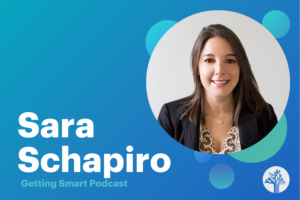The Evolving Role of School Scheduling

By: Erin Werra
School leaders are often looked up to as agents of change.
One big example of polarizing change is the school schedule, whether it’s annual, daily, or some combination of the two. After all, what is more cherished than the end of the school year, looking forward to a sizzling summer break over the next three months?
For seasoned educators, those three months signal a future challenge of combating learning loss. Other challenges pop up when creating a daily schedule—is 45 minutes enough to explain, set up, complete, and review a biology experiment? Are kids falling asleep during morning announcements?
School leaders have begun to tackle these challenges in creative ways. But before we dive into their solutions, let’s take a look at where the nine-month school year started in the first place.
The Roots of the Traditional School Year
The myth has been around for decades which describes a vague, agrarian schedule demanding students be free during summer to work on family farms. Of course, anyone from a farming community can tell you right away the fall is the busiest time of year. So why would school start up again in September just as the harvest is beginning?
The actual schedule pre-Civil War era sent children to school in the dead of winter and the middle of summer, when farm chores were at their lowest volume. Laborious spring and fall months were spent on the farm away from the classroom. City kids went to school year-round. As the population in urban areas grew, wealthy families escaped the sweltering heat by vacationing in the countryside, leaving classrooms half-populated by poorer families. Eventually something had to change. Given the extreme heat in classrooms, school districts moved to shift the school term to a shorter annual schedule, and the summer vacation was born. This was a relief to all, as the popular belief at the time also hypothesized kids’ brains could be overused and injured, similar to muscles and exercise (this has since been proven incredibly false).
Now that the overheated classroom issue was solved, a new one emerged: Students lost knowledge during summer break, particularly those who could not afford summer enrichment such as camps, trips, and tutors.
Making Annual Schedule Changes
The advent of air conditioning and the immensurable changes in social, technological, and vocational opportunities have essentially eliminated the need for a summer break. Why are we so devoted to this norm?
The structure is baked into our culture, finances and livelihoods. It does also benefit kids—and especially teachers—to be able to take a break. Vacations happen when there’s no need to worry about chronic absenteeism, families bond with each other and the weather is right for spending time outside the classroom. There are some downsides—summer learning loss and teacher income among them—but for the most part, if it’s not broken, we’re not fixing it.
We also tend to think international students are required to attend more days of school than students in the United States and in a way it’s true. China and Japan average about 220 days per school year, compared to the US average of 180. If broken down by hourly requirements, however, the nations are all fairly similar. This could be an stepping stone for exploring more creative methods of getting the various educational hours requirements.
Some have proposed eliminating summer break completely by adding longer breaks interspersed throughout the year. It sounds reasonable on paper and definitely solves the summer slide issue, but at the same time could place an additional burden on working families. It’s a lot harder to find high-quality childcare for a couple weeks at a time than it is for a solid block of three months. Which leaves us with a couple options:
1. Tack on to the existing school year: Go longer into the summer, start earlier in the fall.
Pro: We establish a solid momentum for learning.
Cons: Facilities and family structures may not permit this.
2. Attending school only in the summer and winter:
Pro: Our crops will be well-tended.
Cons: Okay, all joking aside, opportunity to produce innovative schedules remains—
Making Daily Schedule Changes
Here’s where a ton of variables are adding up to slowly break traditional classroom schedules. Schools are using a mixture of research and common sense to make decisions about when school should start and end. Leaders may take into consideration the effect of adequate sleep on teens’ learning or the traditional workday as more parents enter the workforce.
School leaders are seeing great learning and culture results with flex mod scheduling. They’ve amped up student agency using arena scheduling. These creative scheduling methods are designed to maximize the courses and enrichment choices students have in school. They allow for free periods for kids to work on passion projects, catch up with homework using school technology, or attend counseling sessions. The breathing room extends to teachers as well. Instead of finding odd pockets of time or staying late, planning and prep periods are built in.
For families who need it, school leaders are also devising ways of providing resources and opportunities. Students who were previously facing chronic absenteeism have been provided accommodations to arrive before school to get to class on time. Other districts now offer a place for students and families to go for help, including drop-in centers with resources for homeless youth, laundry services, food pantries and after-school care.
The Outcome
The outcome of a thoughtful, not cookie cutter, schedule is an increase in community engagement. The school forms to fit the community’s needs, not the other way around, in a symbiotic relationship.
Some tactics, such as flexible arrival or pickup times, free periods during school hours and community resources including food pantries and laundry, are helpful in building equity among the student population. When students are able to remedy the challenges they face outside the classroom, which more fortunate peers do not, their odds of success despite them increase.
The pressure on schools to be everything to everyone is real. School leaders are only human. Still, thinking outside the 9-month, 8 a.m.–3 p.m., M–F school scheduling prescription can have palpable impact.
For more, see:
- 4 Ways to Build a Better Schedule
- Scheduling for Learning, Not Convenience
- Four Keys to Success at the Most Innovative Schools in the World
Erin is a writer for Advancing K12 and Skyward, covering topics in K12 education leadership, culture, and technology. Find her on Twitter @erinwerra.
Stay in-the-know with innovations in learning by signing up for the weekly Smart Update.







0 Comments
Leave a Comment
Your email address will not be published. All fields are required.